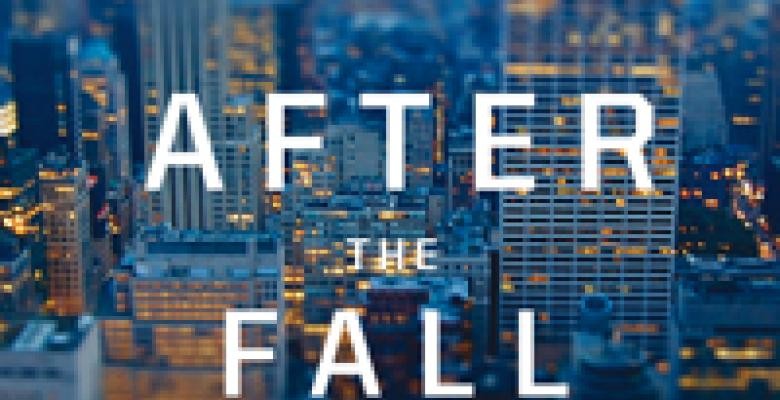When the Towers Fell: An Oral History of 9/11 and Its Aftermath
The Columbia University community joins our fellow New Yorkers and people around the world in remembering those who lost their lives on Sept. 11, 2001. Below is a story from last year that highlights the Columbia Center for Oral History’s ongoing role in preserving accounts of 9/11 and its effects.

In the aftermath of 9/11, Mary Marshall Clark began noticing that a deep stillness had fallen over New York City. “It had never been so quiet,” the librarian recalls. “It was unnerving, and I wondered what lay beneath the silences.”
As director of the Columbia Center for Oral History—the oldest and largest university-based oral history project in the country—Clark was uniquely qualified to undertake the process of recording the conversations that emerged. She was stumped, however about how to organize a project of this scale for an event so current. At the suggestion of then-provost Jonathan Cole, she teamed up with sociology professor Peter Bearman, and they set out to gather accounts of 9/11 and its effects on New Yorkers.
Together, Clark and Bearman, who directs the Institute for Social and Economic Research and Policy, trained 30 interviewers who went into the field within days of Sept. 11, 2001, to collect stories throughout the city’s five boroughs. They recorded first responders, workers in the World Trade Center, taxi drivers, clergy, psychologists, public health workers, teachers, the unemployed and people who were affected by anti-Muslim backlash.
In early interviews, “a person might describe the horror of their experience and then go on to describe some aspect of 9/11 that was very ordinary,” says Clark. “People had trouble integrating their experiences, which tells us something about the degree of trauma. At the same time, the stories were incredibly powerful and literate—reading the transcripts, it often felt as if we were reading from great novels.”
Now, some of those novels are available between hard covers: "After the Fall: New Yorkers Remember September 11, 2001 and the Years That Followed," focuses on 19 compelling interviews. It is published by The New Press and edited by Clark, Bearman and radio documentarians Catherine Ellis and Stephen Drury Smith.
The first was with paramedic James E. Dobson, who took cover in his ambulance when Tower Two began to fall. “We’re just grabbing people and pulling them into the back of the ambulance,” he says. “And you hear this terrible roaring sound that’s coming down. … The ambulance is swaying … Everything starts getting black. It goes pitch, pitch black. And I say, ‘Oh, Jimmy. This is not good. This is not good.’”
Bearman, the Jonathan R. Cole Professor of Sociology, says that many of the stories are “exceptionally moving—they’re rich with the sadness and hopes of real human beings.” But as an academic, he was interested in a very particular question: How do you know if an event becomes a turning point in someone’s life? Answering that question required that the study go on beyond the immediate aftermath of 9/11. About a year later, “We conducted roughly 200 follow-up interviews,” Clark says. And in 2004, “We caught up with some people who weren’t quite ready to talk in 2002 and 2003.”
Today, the project comprises audio and video interviews with 556 people and nearly 1,000 hours of oral testimony, making it the biggest single undertaking for the center, which was founded in 1948 by history professor Allan Nevins. Two-thirds of the 9/11 collection is now open to the public, which Clark hopes will lead to further research. Among its other distinctions, the archive is “one of the largest qualitative interviewing projects on mass trauma in this country,” Clark said.
The idea to use oral history to document 9/11 was supported by Columbia Libraries, of which the center is a part, and hinged on the cooperation of professors across the University. They included Kenneth Jackson, the Jacques Barzun Professor in History and the Social Sciences, who invited Clark to solicit volunteers among his students, and faculty at the Mailman School of Public Health, who focused on the sociomedical aspects of the catastrophe.
Interviewers included graduate students, professionally trained oral historians and journalists. One of the latter was Myron Farber, a retired "New York Times" reporter. “I would say, ‘Find me 10 people who work for the Port Authority,’ and he would do it in a week,” said Clark. “Oral historians, generally, are very shy; journalists are used to doing what it takes to get the story.”
Until this project, says Clark, the office “had a limited understanding of what it meant to do contemporary oral history projects.” Previous projects—on former New York Mayor Ed Koch’s administration and Nobel laureates on scientific research, for example—involved speaking to people about trends and events that may have happened 30 or 40 years earlier. “This transformed both the office and the idea of what it could and should do,” she said.
The project also reflected developments in the field of oral history, which has moved from a focus on those who made history to those who lived it. More than a tool for conducting historical research, the interview is now seen as “an interactive forum for exploring the meaning of history, culture and society through personal reflection and analysis,” she said. “To paraphrase Sartre, we’re interested in knowing not only what happened to people, but what people did with what happened to them.”
Bearman believes the book captures views that may surprise many Americans.
While in the rest of the United States, he says, “fear dominated the discourse after 9/11, New Yorkers had a different response. And this book features that response: understanding, healing and the return to normalcy much faster than anyone might have imagined.”